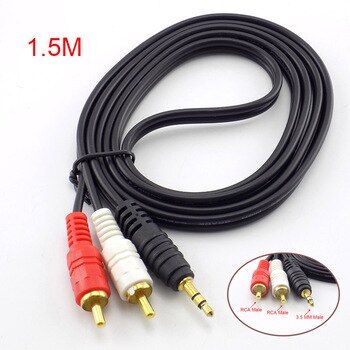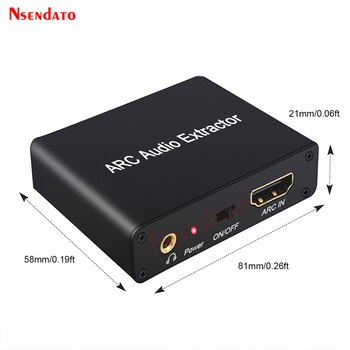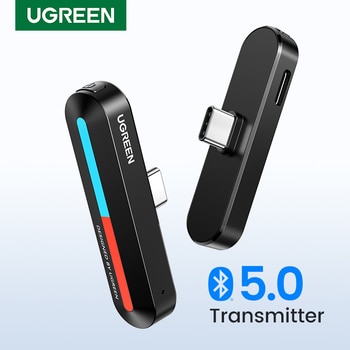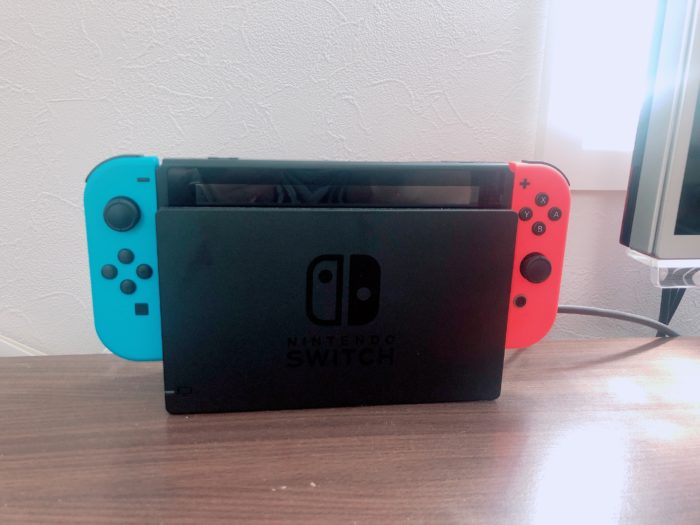Have you ever thought of this while playing a game?

I wish I could get higher sound quality and more powerful sound.
Presumably, there will be a variety of user feedback regarding the game sound reproduction environment.
“I’m tired of listening to sound through earphones.”
“It’s a hassle to plug in headphones every time.”
“I feel like I might have hearing loss if I listen to games too loudly through headphones.”
“The sound coming from the display is not powerful enough.”
In this article, I would like to introduce how to easily get high quality audio output from Nintendo Switch.
If you keep the points in mind, you can get high quality sound easily and inexpensively.
How to output audio from the Nintendo Switch
Audio output from modern game consoles is quite tricky.
Although this is a slight digression from the Nintendo Switch, the audio output from the PlayStation 4 (PS4) is also quite tricky.
Now, there are four major audio output methods for the Nintendo Switch.
1) Output from the stereo mini jack on the top of Nintendo Switch
2) Split audio data obtained from HDMI output
3) Output using a USB Bluetooth adapter
4) Output from USB DAC
The table below summarizes the characteristics of each method.
| sound quality | delay | volume control from Switch | note | |
| 1) Output from the stereo mini jack on the top of Nintendo Switch | average Sound quality is not good since it uses the Switch’s own shoddy DAC. | good Small delay due to wired connection | OK | easy way, this method is useful for voice chatting |
| 2) Split audio data obtained from HDMI output | average – good Sound quality depends on the DAC device at the destination of the branch from HDMI. | good Small delay due to wired connection | NG | for professionals |
| 3) Output using a USB Bluetooth adapter | average Sound quality is not good since it uses the Switch’s own shoddy DAC. | average There is a delay of a few milliseconds due to wireless communication via Bluetooth. | OK | easy way, this method is useful for voice chatting |
| 4) Output from USB DAC | good Generally good sound quality | good Small delay due to wired connection | OK | high sound quality and low latency, most recommended |
When compared in terms of “sound quality,” “low latency,” and “ability to adjust volume from Switch,” 4) output from USB DAC is the most recommended method.
The easiest way is 1) to output from the Switch’s stereo mini jack.
I would like to explain each method.
1) Output from the stereo mini jack on the top of Nintendo Switch
Nintendo Switch has a stereo mini jack on the top of the unit (No.6 in the figure below).

This is how to connect audio equipment to the stereo mini jack.
A cable that converts between stereo mini jacks and RCA jacks, or a cable that connects stereo mini jacks to each other, is used to connect to the external input jacks of speakers or amplifiers.

Here is a product link to Aliexpress, a cheap Chinese website.
In this method, the digital analog converter (DAC) that converts digital audio signals to analog signals is handled by a shoddy DAC on the Nintendo Switch board, so high sound quality cannot be expected.
Audio sound is greatly affected by the accuracy of the DAC.
However, this method is very intuitive, so it is easy to understand even if you are not an audio expert.
Because of the wired connection, the sound delay is small.
The volume can be adjusted using the volume control on the Nintendo Switch itself.
2) Split audio data obtained from HDMI output
The HDMI output of the Nintendo Switch contains not only video data but also audio data.
The method is to take this audio digital data and connect it to an external input terminal on an amplifier or speakers.
A device that extracts only the audio signal from the digital signal flowing through HDMI is like this.

Here is a product link to Aliexpress, a cheap Chinese website.
You can probably get it for roughly $30 more money.
As you can probably guess from the fact that the device has an HDMI terminal and RCA terminals, this kind of HDMI audio separator is often equipped with a DAC, which is undesirable from a sound quality perspective if the audio signal is converted from digital to analog with a cheap DAC in this inexpensive device.
However, it is also possible to have an audio optical digital output terminal such as an S/P DIF terminal and connect the audio digital signal taken from the HDMI to an amplifier with an optical digital input terminal via S/P DIF in digital form.
In this case, the DAC can be handled by the amplifier, so the sound will depend on the amplifier’s DAC performance.
However, the process of relaying the data output from the HDMI terminal through an HDMI audio separator, performing electrical/optical conversion, and then outputting the data again to S/P DIF is a roundabout way to generate jitter in the time axis direction, and the sound quality is degraded, although not to a significant degree.
In this method, the sound delay is small because of the wired connection.
However, it should be noted that the volume cannot be adjusted from the volume control on the Nintendo Switch itself.
This is fine if you intend to adjust the volume on the amplifier side, but some may find it inconvenient if the volume control does not work with the volume control on the Nintendo Switch itself.
3) Output using a USB Bluetooth adapter
It is a way to connect headphones or Bluetooth speakers via Bluetooth by connecting a Bluetooth dongle to the Nintendo Switch’s USB port.
For about $35, a Bluetooth adapter compatible with the Nintendo Switch is sold.

Here is a product link to Aliexpress, a cheap Chinese website.
This is a very easy way to connect speakers and headphones wirelessly via Bluetooth, which has the advantage of keeping the wiring clear.
When choosing a Bluetooth adapter, it is important that it supports the aptX codec.
There are several methods such as AAC, but aptX is the method that takes into consideration low latency audio transmission.
If you want to connect audio devices wirelessly, this is the only way to go.
(And since many of these kinds of Bluetooth adapters are also compatible with game consoles such as the PlayStation 4 (PS4), they can be shared and used not only with the Nintendo Switch, but also with the PS4 and other consoles, so it is a good value in that respect as well.)
However, there is a disadvantage that the connection is sometimes unstable, such as Bluetooth pairing loss.
Also, since the connection is made wirelessly, there is a slight delay in the audio.
The Bluetooth adapter encodes or compresses the analog audio, puts it on the wireless signal, and sends it over, and the speaker side receives the data from the wireless signal, decodes the analog audio, and so on. This process causes a delay of several milliseconds to several tens of millisecond.
In a 60 fps game, the delay is about 2 or 3 frames, so it is not significant enough.
The advantage of this method is that the volume can be adjusted from the volume control on the Nintendo Switch itself.
The Bluetooth wireless connection makes for clean wiring, and the ability to change the volume from the Nintendo Switch itself makes it easy and worthwhile to have one of the Bluetooth adapter dongles.
4) Output from USB DAC
This method is the author’s most recommended method.
This is a method of having the Nintendo Switch recognize a USB DAC product for personal computers (PCs) and output audio using the high-quality circuitry of the USB DAC for PCs.
USB DAC products for PCs are available for people who want an external DAC, so they generally have high-quality sound DACs.
The wired connection, of course, has low latency and is ultra-stable.
However, we need to be careful here, because as we wrote about “making the Ninteido Switch recognize a USB DAC product for a PC”, if the product does not have a driver for the Ninteido Switch, the Ninteido Switch will not recognize it.
Therefore, we need to prepare a USB DAC that the Nintendo Switch will recognize.
However, even if you look carefully at the product specifications of USB DACs, there are very few products that officially claim to be “compatible with Nintendo Switch”.
Therefore, I surfed the net and investigated USB DAC devices that are compatible with Nintendo Switch, and I would like to summarize them here.
Summary of USB DACs compatible with Nintendo Switch
I would like to list USB DACs that are compatible with Nintendo Switch.
In particular, the following articles were so well organized that I have made it our source.
Thanks a lot.
horza21’s post in reddit
https://www.reddit.com/r/NintendoSwitch/comments/77whjd/usb_dac_with_new_40_update/dopgy1w/
u/thibi’s post in reddit
https://www.reddit.com/r/NintendoSwitch/comments/b7r1dv/usb_dac_support_os_ver_70_edition/
using a DAC with Nintendo Switch (Japanese page)
https://quintrokk.subness.net/?p=1902
List of USB DACs compatible with Nintendo Switch
| USB DAC | chipset | Is it compatible with Nintendo Switch? |
| Asus Sonar U3 | C-Media based | OK |
| AudioEngine D1 | Texas Instrument TI1020B | OK |
| AV Access 4KSW41-KVM | OK | |
| Behringer U-CONTROL UCA202 | Texas Instruments PCM2902E | OK |
| Behringer U-CONTROL UCA222 | Texas Instruments PCM2902E | OK |
| Behringer Xenyx 202 USB | OK | |
| Behringer Xenyx 302 USB | OK | |
| Behringer Xenyx WX1622USB | OK | |
| Bluewave Get | OK | |
| Cyrus Soundkey | OK | |
| Essential PH-1 USB-C to 3.5mm | OK | |
| FiiO BTR3 | OK | |
| FiiO K1 | OK | |
| iFi audio ZEN DAC | OK (Latest firmware update required from iFi website) | |
| JDS Labs C5D | Savvitech SA9027 | OK |
| JDS Labs O2 | OK | |
| Logitech H800 | OK | |
| Monoprice Desktop Headphone Amplifier | OK | |
| Nuforce Cube | C-Media CM108AH | OK |
| Nuforce Icon 2 | OK | |
| Nuforce HDP | OK | |
| Phantom YoYo PCM2704 | Texas Instrument PCM2704 | OK |
| Pro-Ject DAC Box S | OK | |
| Radstone Earstudio | Cambridge Silicon Radio CSR 8675 | OK |
| REIYIN DA-SUPER | C-Media CM6642 | OK |
| Razer phone Earstudio ES100 | OK | |
| Schiit Fulla | OK | |
| Schiit Fulla 2 | C-Media CM6631A | OK |
| Schiit Modi | OK | |
| Schiit Modi 2 | C-Media CM6631A | OK |
| Sennheiser G4me One | OK | |
| Shanling UA2 | OK | |
| Signstek Audio USB-DAC | OK | |
| SMSL Fort | OK | |
| SoundBlaster G3 | OK | |
| StarTech ICUSBAUDIO | OK | |
| Steelseries Artis Pro Wireless | OK | |
| Steelseries Siberia V2 | OK | |
| Tunai Square Bluetooth | OK | |
| Turtle Beach Audio Advantage Amigo II | C-Media CM102 | OK |
| Turtle Beach Audio Advantage Micro | C-Media based | OK |
| Turtlebeach Stealth 600 (PS4) | OK | |
| Turtlebeach Stealth 700 (PS4) | ||
| UGreen USB 2.0 External Sound Adapter | C-Media HS-100B | OK |
| Zoom H4n Pro | OK |
List of USB DACs NOT compatible with Nintendo Switch
| USB DAC | chipset | Is it compatible with Nintendo Switch? |
| AK4497 + Amanero Combo384 | NG | |
| AudioEngine D3 | Texas Instrument TI1020B | NG |
| AudioQuest Original DragonFly | NG | |
| Centrance DACPort Classic | Texas Instrument TAS1020B | NG |
| Centrance DACPort HD | XMOS U8 | NG |
| Chord Mojo | Chord proprietary USB chipset | NG |
| Creative Sound Blaster E5 | NG | |
| ESI Dr. DAC Nano | Tenor TE7022L | NG |
| FiiO ‘Andes’ E07K | Texas Instrument PCM2706 | NG |
| FiiO E10K | Tenor TE7022 | NG |
| FiiO Q1 | NG | |
| FX Audio FX-D03J | NG | |
| FX Audio FX-D03J+ | NG | |
| FX Audio DAC-X6 | Via VT1630A | NG |
| Focusrite Scarlett 2i2 | NG | |
| Fostex HP-A3 | NG | |
| HIFIME UAE23HD | Savitech SA9023 | NG |
| HifiMe UH1 | Savitech SA9227 | NG |
| iFi Nano iDSD | NG | |
| Jabra Evolve 40 | NG | |
| Questyle QP1R | NG | |
| RHA Dacamp L1 | NG | |
| Rotel RA-1570 | C-Media based | NG |
| Schiit Modi 2 Uber | C-Media CM6631A | NG |
| Schiit Modi 2 Multibit | NG | |
| Sennheiser BTD800 | NG | |
| Sennheiser MB660 | NG | |
| SMSL Audio M3 | Texas Instruments TAS1020B | NG |
| Teac HA-P5 | Teac based USB chipset | NG |
| Topping TP32EX | NG | |
| UD-301 | NG | |
| Zorloo ZuperDAC | NG |
*Note: This is only a compilation of postings on the web and does not guarantee operation. Please check for yourself and take responsibility when purchasing.
In the process of compiling this summary, I was reminded of the vast number of USB DACs out there.
It seems that they are divided into supported/not supported depending on the chip used for USB-IF.
Some chips made by C-Media and Texas Instruments are compatible with the Nintendo Switch.
Interestingly, the same C-Media chip, CM6631A, is available in two types, one that is compatible and one that is not.
It seems that there are different modes for the same chip, and that the compatible/not compatible is divided according to the mode.
Even after looking over the situation like this, I still don’t know what the key factor is that controls compatible/not compatible.
I searched global sites quite deeply to find out, but I could not figure it out after all.
I saw some postings that some USB DACs with USB Audio Class (UAC) 1.0 are compatible, but apparently not, since some USB DACs are not compatible even USB Audio Class 1.0.
Connecting USB DAC to Nintendo Switch
Now, let’s actually connect the USB DAC to the USB port on the Nintendo Switch’s base.

I happen to have a Behringer U-CONTROL UCA202 (Texas Instruments PCM2902E), so I decided to use that.
The Behringer U-CONTROL UCA202 is a very inexpensive USB DAC.
Despite its price, it supports ASIO Driver.

The DAC device uses a Texas Instruments chip called PCM2702E, which is inexpensive but has a reputation for high sound quality.
Now, like an audiophile, I suddenly became very talkative when talking about DAC chips, but let’s get back to the story and try connecting the UCA202 to the Nintendo Switch.

Recognized without any problems! Beautiful sound!
I had done some research beforehand and knew that the Nintendo Switch would recognize the UCA202, but it recognized and produced sound just by plugging it in easily, with no setup required.
You can use the UCA202’s DAC and connect it to speakers or an amplifier through the UCA202’s RCA terminals, or you can connect it to an external DAC with an optical digital cable since the UCA202 has an S/P DIF (optical digital output terminal).
The range of audio environments for the Nintendo Switch has expanded dramatically!
The Behringer U-CONTROL UCA202 seems to be properly recognized by PlayStation 4 as well; it can also be used for PS4 audio output.
Comments